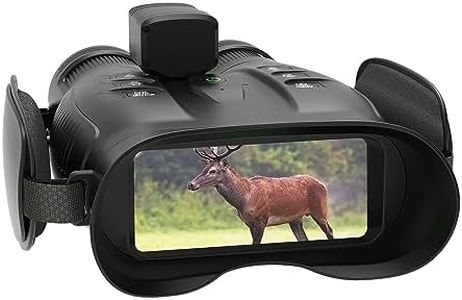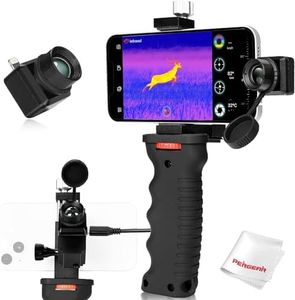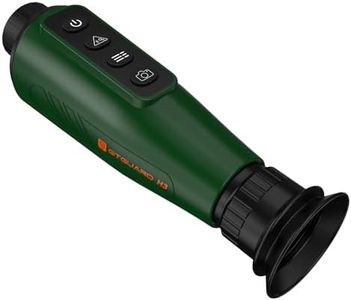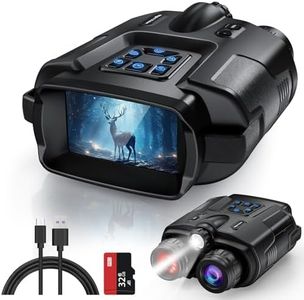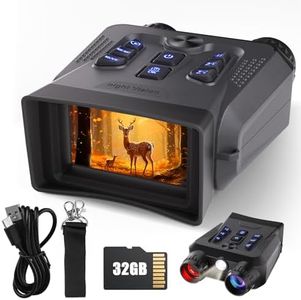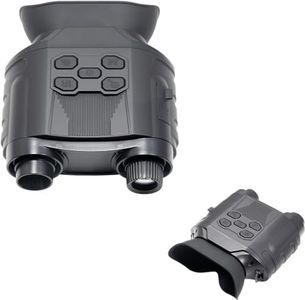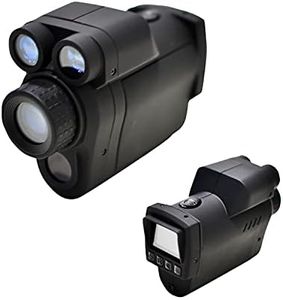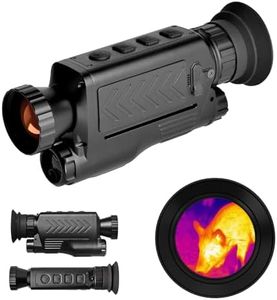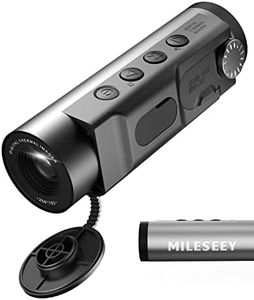We Use CookiesWe use cookies to enhance the security, performance,
functionality and for analytical and promotional activities. By continuing to browse this site you
are agreeing to our privacy policy
10 Best Thermal Vision Goggles
From leading brands and best sellers available on the web.By clicking on a link to a third party's website, log data is shared with that third party.
Buying Guide for the Best Thermal Vision Goggles
Choosing the right thermal vision goggles comes down to understanding your needs and knowing how the specifications impact your experience. Whether you need them for security, wildlife observation, or search and rescue, matching the specs to your intended use is the best way to ensure satisfaction. It's important to consider where and how often you'll use the goggles, and what environmental conditions you'll face, as these factors will help you focus on specs that truly matter.ResolutionResolution refers to the number of pixels in the thermal sensor, which determines how clear and detailed the image will appear. Higher resolution produces sharper and more detailed images, which can be crucial for identifying objects at a distance. You will find resolutions ranging from low (around 160x120), which is fine for basic navigation and spotting larger objects, to mid-range (320x240) offering a clearer image for most uses, up to high (640x480 or more) suited for professional applications where details matter. If you need to recognize fine details or spot small animals or hazards, go for higher resolution. For general observation or navigation, a mid-range resolution may suffice.
Detection RangeDetection range shows how far the thermal goggles can pick up heat signatures effectively. This is important because a longer range allows you to spot people, animals, or objects from a distance. Shorter detection ranges (under 300 meters) are fine for indoor use or close quarters, while mid-range (300-1000 meters) is suitable for open fields or outdoor adventures. Long ranges (over 1000 meters) work best for search and rescue, security, or surveillance across large open areas. Your choice depends on whether you need to see nearby or faraway targets.
Refresh RateRefresh rate measures how often the image updates each second, shown in hertz (Hz). A lower refresh rate (around 9-15Hz) is suitable for stationary use or slow movements. Mid-level (25-30Hz) is more fluid and works well for walking or panning the goggles around, while high refresh rates (above 30Hz) are ideal for observing moving targets or fast-paced activities. If your intended use involves tracking movement or scanning quickly, look for a higher refresh rate for smoother images.
Field of View (FOV)Field of View tells you how wide an area you can see through the goggles at once, usually measured in degrees. A wide FOV (over 40 degrees) lets you see more area, useful for scanning large spaces or trails. A narrow FOV (under 20 degrees) gives a more zoomed-in view, better for spotting details at a distance. If your primary concern is spotting movement or surveying broad spaces, choose a wider FOV. For focused observation or identifying distant targets, a narrower FOV is ideal.
Battery LifeBattery life determines how long the goggles will last before needing a recharge or new batteries. Longer battery life is important for extended outdoor use or situations where charging is inconvenient. Standard battery life can range from a couple of hours up to ten or more hours depending on the model and features being used. Consider your typical usage scenarios—if you’re out for long periods, prioritize a longer battery life.
Weight and ComfortWeight and comfort are key for any wearable device, especially if you plan to use the goggles for long stretches. Lightweight models are easier to wear and cause less fatigue. Heavy goggles can become uncomfortable quickly, particularly if you need to move around a lot. Try to assess how the goggles feel or look for information about fit, and match the weight to what you’re comfortable carrying or wearing for the intended duration of your activities.
Weather ResistanceWeather resistance tells you how well the goggles can handle rain, dust, or extreme temperatures. This is important if you’ll be using the goggles outdoors or in unpredictable environments. There are different levels of water and dust protection, usually indicated by an IP (Ingress Protection) rating. For occasional indoor or fair-weather use, less protection is needed. For rugged outdoor use, higher weather resistance ensures durability and reliability.
